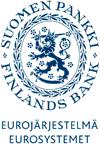 Research Discussion Papers, Bank of Finland
Research Discussion Papers, Bank of Finland
No 16/1998:
Interbank funds transfer systems: liquidity needs, counterparty risks and collateral
Harry Leinonen ()
Abstract: Over the next few years, we will see a pronounced increase
in the speed at which payment transactions are executed and in the share of
cross-border transactions, particularly in the euro area. Counterparty
risks and liquidity needs connected with the transfer of funds continue to
evolve and to provoke discussion. The fact that funds transfers occur and
systems operate on a real-time and gross basis will significantly alter the
operational character and technical solutions in this field. Systems
following a daily timetable are being replaced by continuously operating
systems, which will have a significant impact on banks' liquidity
management. The trend toward immediate real-time payment transactions seems
inevitable in the light of present trends.
It is generally presumed
that RTGS systems operating on a gross basis require more liquidity than
netting systems. Liquidity needs depend on payment system structures and
payment flows. An even flow of payments requires less liquidity than an
uneven flow. Liquidity needs can be significantly reduced by choosing an
appropriate payment system structure, taking measures to even out payment
flows and agreeing on market practices. The pricing, collateral and reserve
requirement policies of the central bank affect also the efficiency of
alternative payment systems. Thus the overall efficiency of a gross or net
system depends on many factors. Factors arguing for a gross system are
differences in counterparty risks, lack of reciprocity, steady interday
payment flows and stable liquidity needs, both within and between days.
Factors favouring net systems are the existence of small and varying
counterparty risks and structurally unsteady payment flows that result in
large interday variations in liquidity, even though overnight variations
may be moderate.
Current, daily-oriented practices have focused on
overnight liquidity needs. In a continuously operating environment,
liquidity needs are continuously monitored across time-period borders. This
means that banks' liquidity management will in the future operate under a
new and broader time perspective.
Significant liquidity needs and large
counterparty risks are inherent parts of Finland's present funds-transfer
solutions. Liquidity can be freed for other uses and counterparty risks
reduced by changing the structures. The necessary changes have been agreed
and soon we will see fundamental changes in Finnish payment systems.
Keywords: payment system settlement; gross settlement; RTGS; payment system counterparty risks; payment system liquidity needs; (follow links to similar papers)
41 pages, July 31, 1998
Before downloading any of the electronic versions below
you should read our statement on
copyright.
Download GhostScript
for viewing Postscript files and the
Acrobat Reader for viewing and printing pdf files.
Full text versions of the paper:
DP_16_1998.pdf 
Download Statistics
Questions (including download problems) about the papers in this series should be directed to Minna Nyman ()
Report other problems with accessing this service to Sune Karlsson ()
or Helena Lundin ().
Programing by
Design by Joachim Ekebom
 Research Discussion Papers, Bank of Finland
Research Discussion Papers, Bank of Finland
 Research Discussion Papers, Bank of Finland
Research Discussion Papers, Bank of Finland